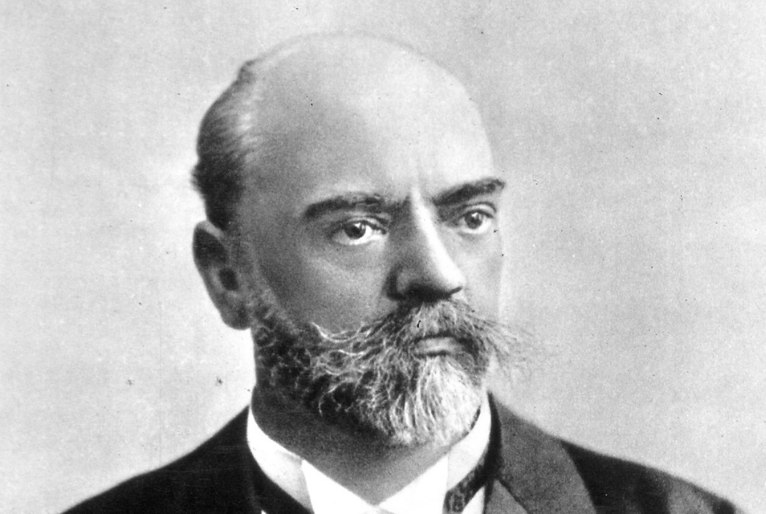Antonín Dvořák, a towering figure in Romantic music, composed works that are celebrated for their melodic beauty and inventive orchestration. His compositions span symphonies, chamber music, and operas, reflecting his Bohemian heritage and his experiences in America. Here’s a look at ten of his most celebrated compositions:
1. Symphony No. 9 in E Minor, Op. 95 “From the New World” (1893)
Overview: Written during Dvořák’s time in America, this symphony is infused with influences from Native American music and African-American spirituals, capturing the essence of the New World.
Significance: The symphony’s Largo movement, with its famous English horn solo, and the vibrant final movement make it a favorite in the symphonic repertoire. It reflects Dvořák’s fascination with American themes while staying true to his Bohemian roots.
2. Cello Concerto in B Minor, Op. 104 (1894–95)
Overview: Composed for his friend, the cellist Hanuš Wihan, this concerto is renowned for its lyrical depth and technical demands, blending emotional intensity with virtuosity.
Significance: The concerto’s intricate interplay between the solo cello and the orchestra, especially in the Adagio movement, showcases Dvořák’s mastery in creating a deeply personal and universally resonant work.
3. Slavonic Dances, Op. 46 (1878) and Op. 72 (1886)
Overview: These sets of orchestral dances draw from Czech folk music, full of spirited rhythms and lush melodies, offering a vivid portrayal of Bohemian dance forms.
Significance: Originally written for piano duet and later orchestrated, these dances gained immense popularity and helped solidify Dvořák’s reputation. They capture the joyous and vibrant spirit of Slavonic folk culture.
4. String Quartet No. 12 in F Major, Op. 96 “American” (1893)
Overview: Composed during Dvořák’s stay in the United States, this quartet integrates American folk elements with a fresh, pastoral quality, reflecting his experiences in the American countryside.
Significance: The quartet is characterized by its open-air quality and simple yet captivating themes, with the Lento movement standing out for its hauntingly beautiful melody.
5. Symphony No. 7 in D Minor, Op. 70 (1885)
Overview: Dvořák’s Seventh Symphony is one of his most dramatic and sophisticated works, blending a tragic tone with powerful and complex orchestration.
Significance: Often considered his finest symphony, it exhibits a deep sense of nationalism and a profound emotional range, making it a staple of the symphonic repertoire.
6. Piano Quintet No. 2 in A Major, Op. 81 (1887)
Overview: This quintet, known for its warm melodies and folk-inspired dance movements, combines the lyrical qualities of the piano with rich string textures.
Significance: The work is praised for its seamless integration of folk elements with classical form, particularly in the Dumka and Furiant movements, demonstrating Dvořák’s ability to create music that is both sophisticated and accessible.
7. Stabat Mater, Op. 58 (1876–77)
Overview: A large-scale choral work, the Stabat Mater reflects Dvořák’s personal grief after the death of his children. It’s a poignant and expansive setting of the medieval hymn on the sorrow of Mary at the Crucifixion.
Significance: This work marked Dvořák’s entry into the international spotlight, showcasing his talent for choral composition and his ability to convey deep emotional and spiritual themes.
8. Rusalka, Op. 114 (1900)
Overview: Rusalka is Dvořák’s most famous opera, based on Slavic folklore about a water nymph who falls in love with a human prince. It’s known for its lush orchestration and the famous aria “Song to the Moon.”
Significance: This opera is celebrated for its evocative music and dramatic narrative, blending mythological themes with lyrical beauty, making it a beloved staple in the operatic repertoire.
9. Symphony No. 8 in G Major, Op. 88 (1889)
Overview: Known for its joyful and pastoral character, the Eighth Symphony is infused with Bohemian folk influences and showcases Dvořák’s mastery in orchestral color and thematic development.
Significance: The symphony is admired for its optimistic tone and inventive structure, particularly the vibrant finale, which features a series of variations that bring the work to an exhilarating conclusion.
10. Humoresques, Op. 101, No. 7 (1894)
Overview: Part of a set of eight short piano pieces, the seventh Humoresque is particularly famous, known for its catchy and whimsical melody.
Significance: This piece has transcended its original form to become a popular encore and a favorite in various arrangements, embodying Dvořák’s gift for melody and charm.
Conclusion: Antonín Dvořák’s music stands out for its ability to blend deep emotional expression with the rich heritage of his native Bohemia and the influences he absorbed from his travels. His compositions, ranging from symphonies and concertos to chamber music and operas, continue to captivate audiences with their melodic beauty, rhythmic vitality, and profound emotional depth.


Comments are closed